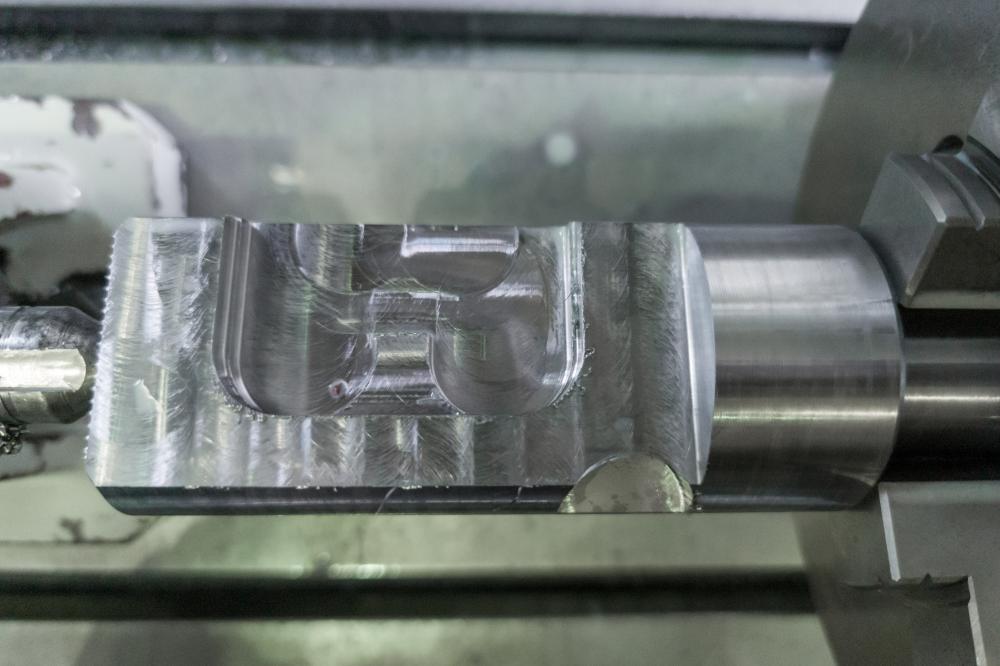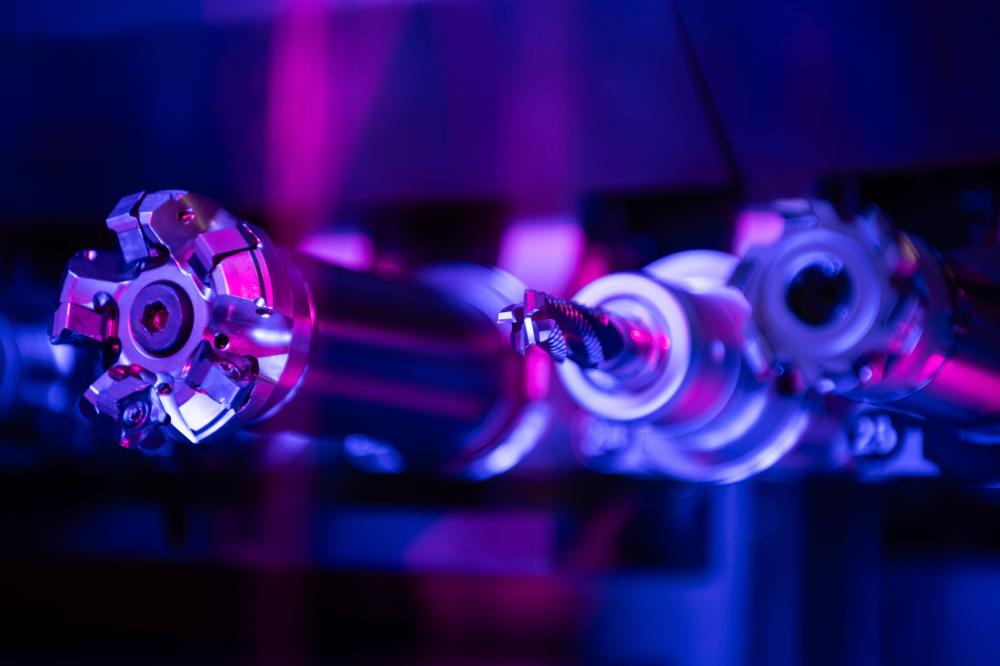4 Axis Machining

A Brief Guide to 4 Axis Machining
At Cal West Manufacturing, we've embraced the complexity and precision of 4 Axis Machining as a cornerstone of our production capabilities. This sophisticated method allows us to create highly intricate parts for industries as diverse as aerospace, automotive, and even the entertainment sectors. Here, we'll dive into what makes 4 Axis Machining unique, and share insights from our own experiences that highlight its importance and versatility in modern manufacturing.
Understanding 4 Axis Machining
4 Axis Machining refers to a CNC (Computer Numerical Control) machining process that uses a rotary axis movement in addition to the traditional X, Y, and Z linear axes. This additional axis enables our machines to rotate the workpiece for complex cuts and shapes, opening up a new realm of possibilities for detailed and intricate design work.
Why 4 Axis?
The inclusion of the rotary axis in 4 Axis Machining allows for the creation of features not possible with standard 3-axis processes. From the perspective of Cal West Manufacturing, this capability means we can offer our clients custom solutions that require less setup time, improve accuracy, and reduce overall project costs. It's a game-changer for projects that need a higher level of precision or involve complex geometries.
Applications of 4 Axis Machining
4 Axis Machining is incredibly versatile, used across various industries for a wide range of parts - from simple to complex geometries. In the automotive sector, it's pivotal for creating custom engine components that require precise tolerances. In aerospace, it allows for the machining of structural parts with complex angles and surfaces. On the entertainment front, it enables us to fabricate intricate set pieces and props that bring the magic of movies to life.
Benefits of 4 Axis Machining at Cal West Manufacturing
Increased Precision and Complexity
One undeniable advantage of 4 Axis Machining is its ability to execute complex and precise cuts in a single setup. This precision is crucial in industries where even the smallest miscalculation can lead to significant issues or increased production costs.
Reduced Production Time
With the capability to work on multiple sides of a part without changing setups, 4 Axis Machining effectively reduces total production time. This efficiency is beneficial for both our workflow at Cal West and the clients depending on our timely delivery of parts.
Challenges and Solutions in 4 Axis Machining
Complex Programming
The programming for 4 Axis Machining can be more complex than traditional 3-axis machines. At Cal West, our team of skilled programmers tackles this challenge head-on, utilizing advanced software and years of hands-on experience to streamline the programming process, ensuring efficiency and precision in every project.
Maintaining Precision
Maintaining tight tolerances on a 4-axis machine requires a deep understanding of machine dynamics and tool paths. Through rigorous training and a commitment to utilizing only the highest quality equipment, our operators excel in executing projects to the most exacting standards.
Real-world Applications at Cal West
In our workshop, we've seen firsthand how 4 Axis Machining can solve problems that other milling processes simply can't. For instance, we once faced a project requiring intricate cuts on a curved surface, which would have been cumbersome, if not impossible, to achieve with a 3-axis machine. Leveraging our 4-axis capabilities, we were able to complete the project efficiently, with a level of precision that exceeded our client's expectations.
The Future of 4 Axis Machining
As we look to the future, the potential for 4 Axis Machining continues to expand. At Cal West Manufacturing, we're excited about the possibilities this technology brings. Our ongoing investment in the latest CNC technology and training for our team ensures that we remain at the forefront of innovation in machining. We believe that as software becomes even more sophisticated and machines more precise, the boundary of what can be achieved with 4 Axis Machining will continue to grow, opening up new avenues for creative and complex manufacturing solutions.

What is 4 axis machining?
At Cal West Manufacturing, when we talk about 4 axis machining, we're referring to a CNC machining process that includes not only the standard X, Y, and Z linear axes but introduces an additional axis, A or B, allowing the workpiece to rotate. This rotation enables us to create complex and intricate parts with unusual shapes or features that wouldn't be possible with just 3 axis machining. It's akin to introducing a new dimension of creativity and capability in our manufacturing process. For example, we once tackled a particularly challenging project that required precise helical cuts along a cylindrical part - something that was made feasible only through the use of our 4 axis machinery.
What is the difference between 3 axis and 4 axis milling?
The primary difference lies in the sophistication and capabilities of the machining process. While 3 axis milling operates on the X, Y, and Z axes, 4 axis milling introduces an additional rotary axis (often referred to as the A or B axis) that allows for rotary movement of the workpiece. This extra axis expands our capabilities significantly, enabling us to perform complex cuts and shapes by rotating the part being milled. It's a bit like the difference between drawing with a regular pencil and using a 3D pen; with 4 axis milling, we can bring more dimensions into play, opening up a realm of possibilities for intricate and precise machining tasks.
What is a 5 axis machinist?
A 5 axis machinist is somewhat of a wizard in the world of CNC machining. They operate machinery that not only includes the standard X, Y, Z, and a single rotational axis found in 4 axis machining but adds a second rotational axis, offering unparalleled versatility. This allows for machining of a part from virtually every angle in a single setup, significantly reducing the complexity and time required for producing intricate designs. At Cal West Manufacturing, our 5 axis machinists are the artisans behind some of our most complex projects, blending their deep understanding of geometry, machine operation, and craftsmanship to breathe life into our client's most challenging visions.
What is the difference between 4 axis and 5 axis milling machine?
The key difference between 4 axis and 5 axis milling machines is the degree of complexity and precision they offer. While 4 axis adds a rotary motion to the traditional X, Y, and Z axes, 5 axis milling introduces an additional rotational axis, allowing the workpiece to be manipulated in five different axes simultaneously. This means that a 5 axis machine can achieve more complex shapes and finer details than what's possible with 4 axis machinery, making it ideal for aerospace and medical applications where precision is paramount. At Cal West, we often find ourselves utilizing 5 axis machining when we're faced with projects that involve complex geometries that require multiple angles of approach.
What are the applications of 4 axis machining in industry?
4 axis machining finds its applications in a multitude of industries due to its versatility and capability to produce complex parts efficiently. In the automotive industry, it's crucial for creating components with intricate designs, such as gearboxes and engine parts. Aerospace applications include machining of airframe structures and turbine components that require high precision. Even in the entertainment industry, we've used 4 axis machining at Cal West Manufacturing to create custom set pieces and props that require a level of detail and complexity that only this type of machining can provide. Each project brings its own set of challenges and learning opportunities, driving us to continuously push the boundaries of what's possible with 4 axis machining.
What are the benefits of 4 axis machining for small businesses?
For small businesses, investing in 4 axis machining can be a game changer. The ability to produce complex and precise parts in-house can significantly reduce lead times and production costs, providing a competitive edge in the market. Additionally, the versatility of 4 axis machining opens up new opportunities for product development and innovation. At Cal West Manufacturing, we've seen firsthand how small businesses can leverage 4 axis machining to not only streamline their production processes but also expand their service offerings, enabling them to enter new markets and attract a wider customer base.
What are the challenges in transitioning to 4 axis machining?
Transitioning to 4 axis machining presents a few hurdles, notably in terms of the initial investment in machinery and training required to operate it effectively. There's also the complexity of programming for 4 axis machining, which can be significantly more complicated than what's required for 3 axis operations. However, at Cal West Manufacturing, we've found that the benefits far outweigh these challenges. With the right training and experience, our team has been able to tackle increasingly complex projects, continuously improving our efficiency and precision. It's all about embracing the learning curve and recognizing the long-term value 4 axis machining brings to our capabilities and services.
Resources
- Federal Aviation Administration (FAA) - The official website of the FAA provides information on regulations, safety, and industry standards in the aerospace sector.
- Society of Manufacturing Engineers (SME) - SME offers resources and articles on manufacturing processes, including CNC machining and 4 Axis Machining.
- National Institute of Standards and Technology (NIST) - NIST is a leading authority on measurement standards and technology, offering insights into advanced machining techniques.
